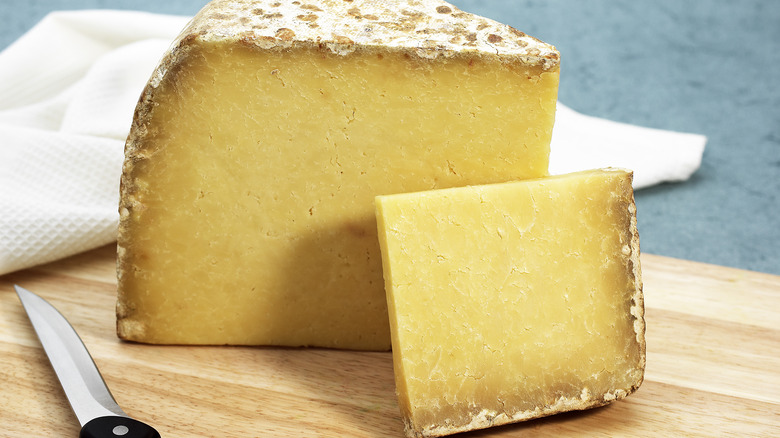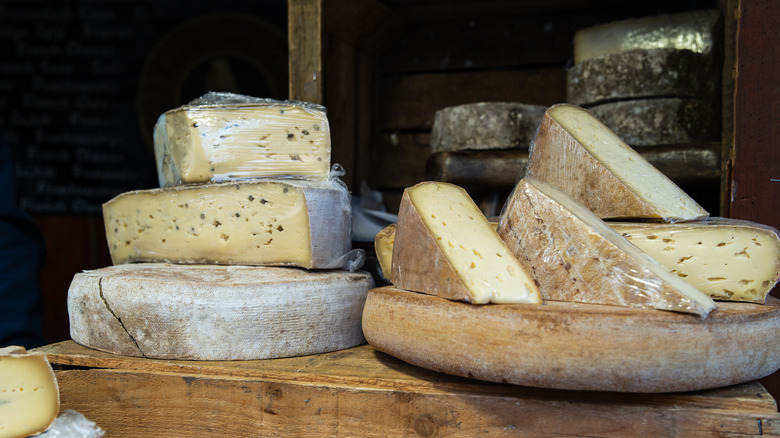What Makes French Cantal Cheese Unique?
France is well-known for its many delectable and piquant cheeses. Some are so unique that they're a must-try at least once in your lifetime. The western European country loves the dairy product so much that there's even a monastery powered by cheese. And yet another claim to the nation's cheese fame is Cantal — a great addition to a charcuterie board or classic French dishes, such as a cheese tart or savory crepe. While considered semi-firm, this type is actually quite hard in comparison to typical French cheeses (via Cook's Info).
Made from cow's milk, Cantal gets its name from the eponymous mountain range in Auvergne, a region in central France (via Gourmet Cheese of the Month Club). The cheese's origins go back more than 2,000 years — when it was a popular food item traded around ancient Rome. Three different kinds of cow's milk are used for the specialty product, which comes in two forms: Cantal Laitier — made from pasteurized milk — and Cantal Fermier — made from raw milk, per Cook's Info. Regardless of the type, regulations require Cantal cheese to be aged for at least 30 days, but this process can go up to six months.
The aging of Cantal cheese
The saying may go that age is only a number, but it plays an important role in the flavor of Cantal cheese. Gourmet Cheese of the Month Club describes the young version of this product as mild in taste. However, as it ages, it loses some of its buttery flavor and becomes more sharp. This is why Cantal and cheddar are often seen as appropriate replacements for each other in recipes, per The Connexion, but the process of making the two cheeses vary greatly. Additionally, Cantal's color changes over time. Throughout the young "jeune," medium "entre-deux," and old "vieux" phases, the cheese transforms from white to butter-like yellow (via Cook's Info).
Cantal's unique flavor profile allows it to be used in different ways, from sandwiches to desserts. So, grab a board and a knife and slice off a piece of this special cheese to savor.

